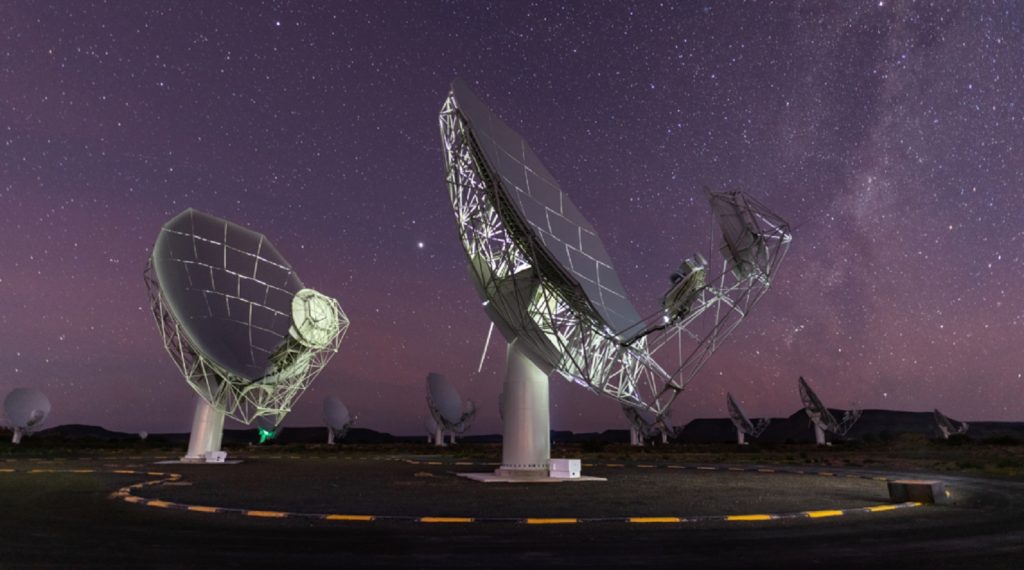OpenAI has launched GPT 5.2, a major model upgrade now available in both the API and ChatGPT. It is described as the company’s most…
South Africa’s MeerKAT telescope discovers group of gas-rich galaxies

The South African Astronomical Observatory (SARAO) has discovered a group of 20 galaxies using the country’s MeerKAT telescope.
The observatory announced the discovery on 6 July.
This is the first time astronomers have discovered the galaxy group, despite it residing in a well-studied area of the sky.
The group may also likely be the most neutral hydrogen gas-rich group ever discovered.
How did South Africa’s MeerKAT telescope discover the galaxies?
The observatory identified the group by detecting hydrogen gas in radio wavelengths.
The MeerKAT International Gigahertz Tiered Extragalactic Exploration (MIGHTEE) survey made the discovery. The telescope, located in the Northern Cape, is a precursor to the Square Kilometre Array.
“This galaxy group sits in an area of sky that has been studied with many other telescopes, but only with MeerKAT is the group structure revealed so clearly,” Co-Chair of the MIGHTEE neutral hydrogen working group, Dr Natasha Maddox, said in a statement.

Most galaxies use a cloud of cold neutral hydrogen gas as raw fuel to form stars. Observing the gas lets astronomers understand the evolutionary processes that happen in galaxies.
While most galaxies reside in groups, it is rare to discover a group this big with this much neutral hydrogen.
This suggests that it is still under assembly. It also suggests that no evolutionary processes that would remove the gas have taken place.
“The distribution of neutral hydrogen gas in these galaxies has revealed interesting, disturbed morphologies suggesting that these galaxies are group members, and are being influenced by their cosmic neighbours in the group,” paper lead, Shilpa Ranchod, explained.
“For example, we found an interacting pair of galaxies that will potentially merge to form a new galaxy with a completely transformed appearance.”
Featured image: SARAO
Read more: NASA records natural radio signal coming from Venus


